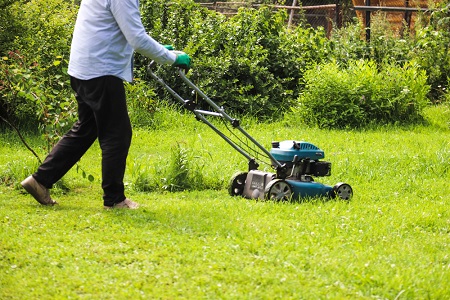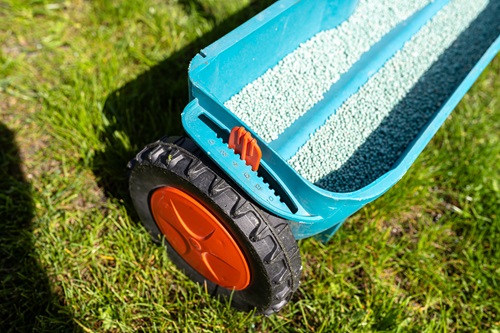
Spring is marked by the return of the first crocuses and daffodils. These signs are also a sign that your lawn is ready for the growing season. These lawn care tasks will vary depending on the climate in your area. Start when it is clear that there won’t be any snowfall in your area. You can also time your yard work to coincide with when the local forsythia plants cease blooming and local lilacbushes start flowering.
There are eight things homeowners should do in spring to ensure a healthy lawn.
Lawn Care Tips You Need To Know
Make sure to rake deeply
When you want your lawn to be ready for new growth, the first thing that you should do is to rake it. You might think, “But my trees hadn’t lost any leaves for months.” Why should I rake? Raking is more than just removing tree leaves. Even if you do a great job of raking leaves in fall, there is still thatch to contend with.
Thatch, which is mainly composed of dead turfgrass tissue, is the layer between the green vegetation and the soil and root system below. If it is more than 1/2 inch thick, it can cause damage to your grass’ health. This is why it is important to rake leaves deeply in autumn.
You still have to rake in spring no matter how well you did in fall. To prevent dead grass from becoming a chokehold on new growth, it’s a good idea for you to remove any grass blades that have died during the winter. This is a spring-cleaning of your lawn. The turfgrasses can be vulnerable and tender in spring. It’s best to wait for the lawn to start to turn green. This indicates that the grass roots have firmly rooted and that the plants are actively growing. It’s better not to use a garden rake that has metal tines, which can cause damage to young plants.
A spring raking can also be beneficial if you find patches of grass that are matted. Snow mold, a type of lawn disease, can be found if you look closely and see that the grass blades are stuck together. These matted patches can be difficult to penetrate for new grass. Raking can help.
Aerate if Necessary
Soil compaction can occur when your lawn is subject to heavy foot traffic. You can remove moss from compacted soil. However, it is best to investigate the root cause. It’s often compacted soil, which needs to be aerated.
The lawn aerator allows air and water to reach the roots of the lawn by creating openings in the turf. A lawn aerator can be rented at big box hardware stores or you can use a hand-operated aerator if your lawn is small. It is unlikely that your soil contains a lot of clay, which would require regular aeration.
Although spring is not the best time to aerate your lawn, it may be necessary due to certain circumstances. It may be necessary for spring aeration if soil has become so compacted that it is unable to grow grass. Spring aerating should be discouraged as the aeration holes are a fertile spot for weed seeds. The first seeds to germinate in spring are lawn weeds, especially crabgrass. Aerating your lawn will stir them up and give them a home. Aerating your lawn in spring is a good idea. This will allow you to weed the grass after they have grown but before they go seed.
Examine the soil
Acidic soil can also be identified by moss covering the ground. The pH scale measures the acidity or alkalinity soil. A pH value of 7 indicates neutral soil. Acidic soils have pH levels lower than 7, while alkaline soils have pH levels higher than 7.
A neutral pH is important for grass. If your soil is too acidic, it will not grow well or may become prone to moss growth. There are many soil amendments that can be used to bring the pH level back to the optimal level to grow grass. Ground limestone is one common way to raise the pH in very acidic soils. This is not an instant fix as the liming process takes place slowly.
To determine the soil’s acidity before you add soil amendments to your soil, send a sample of your soil to your local cooperative extension office. A cooperative extension office provides free scientific-based advice in agriculture, horticulture and other areas. You can call, visit their website or go to your local extension office to get advice on the amount of lime you will need per square foot. To apply lime, you will need a fertilizer spreader.
Too alkaline soil can cause lawn problems. To lower the pH in extremely alkaline soils, your extension office might recommend top-dressing with compost or elemental sulfur.
Overseed
A lawn with many bare spots due to neglect, dog spots, heavy traffic or neglect might need grass seed to fill those gaps. Overseeding refers to the practice of sowing seed on top of existing grass. When overseeding, apply a slow-release fertilizer (starter fertilizer). The new seed should be kept moist until it sprouts and is active growing. After the grass sprouts and germinates, it is possible to start a regular fertilization route using quick-release nitrogen fertilizer.
Although it is possible to only apply seed to visible bare spots, it is common to oversee the entire lawn to keep it healthy and thick. This is a great way to introduce grass seed from new varieties to your lawn. If you have recently lost shade trees, overseeding your lawn with a sunny-grass mixture can help ensure that it continues to thrive.
While fall is the best time for overseeding, spring is a good option if your grass needs it most. You should be prepared for crabgrass growing up and eating the fertilizer.
Fertilize
Organic fertilization can be done by adding compost to the soil or by using a mulching mower that turns lawn clippings into nitrogen. It should be part of your lawn care Myrtle Beach routine. Scotts Miracle-Gro Company offers a well-recognized schedule that fertilizes lawns, which includes a spring feed. Experts recommend that cool-season grasses receive a lighter spring feeding and a heavier fall one. Over fertilizing in spring can cause weed and disease problems. If you fertilize in the fall, your lawn will still have fertilizer for spring.
Use Pre-Emergent Herbicides
Spring lawn maintenance is not just about maintaining healthy lawn growth, but also about weed prevention. All lawn weeds can be treated differently. You will need to use either a pre-emergent or post-emergent herbicide depending on whether the weed is perennial or annual.
You may need to use both because crabgrass is an annual weed that is difficult to eradicate. Crabgrass attacks lawns when temperatures remain between 65 and 70 degrees for several days. Pre-emergent herbicides are used to control weeds before they emerge. They act by creating a chemical barrier on the soil’s top layer that covers seeds, preventing them from growing roots or shoots.
Core aeration should not be done if you are using pre-emergent herbicides. This will cause the shield to be punctured and reduce the effectiveness of the weed killer.
Pre-emergent herbicides can also be used against grass seeds. If you are also using a traditional preemergent herbicide, overseeding will not be very effective. Pre-emergent herbicides can be used to kill weeds. Wait until the fall to overseed with turfgrass seed. Tenacity is a pre-emergent that won’t damage spring-sown grass seed. Tenacity, although a costly product, uses mesotrione which is highly selective and won’t damage turfgrass seed.
Use Post-Emergent Herbicides or Pull Spring Weeds
The dandelions, cheerful yellow flowers that first appear in spring, are a stubborn perennial grower. They can be a nuisance for some people, but they can cause serious problems for others. You can get rid of them by cutting off the flower stems. If you’re feeling more ambitious, remove the root from the weeds using a tool that can extract all the roots and prevent them from regrowing. There are many weed-popper tools that can do the job.
You should choose a broadleaf herbicide if you want to spray a post-emergent herbicide on dandelions. Organic green thumbs that don’t use chemicals can pick the dandelion leaves and make a salad out of them.
You can also deal with chickweed, white clover and wild violets in spring. However, these usually appear after the dandelions in late spring or early summer.
The Lawn Mower should be serviced
It’s also the perfect time to bring out your lawnmower and give it a good cleaning. It’s time to start it; stubborn start-ups can indicate that your mower needs a tune up. Your mower should be serviced once a year. You can restore your mower’s health in three simple steps. You might consider buying a new lawn mower if your mower needs more than a simple tune-up.
Sharpening the mower blade is one of the most important maintenance tasks. Regular sharpening will ensure that the mower blade tears rather than cuts the grass plants. This will result in a lush green lawn instead of one with brown tips.
Call Conner’s Lawn Care Service if you need help in taking care of your lawn.
Conner’s Lawn Care Service
Myrtle Beach, SC
843-504-4901
http://connerslawncare.com/

